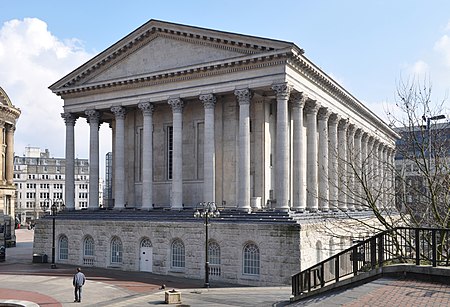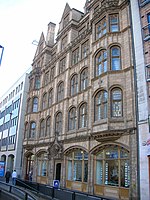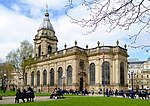Birmingham Town Hall
Buildings by Joseph HansomCity and town halls in the West Midlands (county)Concert halls in EnglandCulture in Birmingham, West MidlandsGrade I listed buildings in Birmingham ... and 6 more
Grade I listed buildings in the West Midlands (county)Grade I listed concert hallsMusic venues completed in 1834Music venues in Birmingham, West MidlandsNeoclassical architecture in EnglandUse British English from April 2022

Birmingham Town Hall is a concert hall and venue for popular assemblies opened in 1834 and situated in Victoria Square, Birmingham, England. It is a Grade I listed building.The hall underwent a major renovation between 2002 and 2007. It now hosts a diverse programme of events including jazz, world, folk, rock, pop and classical concerts, organ recitals, spoken word, dance, family, educational and community performances, as well as annual general meetings, product launches, conferences, dinners, fashion shows, graduation ceremonies and broadcasts.
Excerpt from the Wikipedia article Birmingham Town Hall (License: CC BY-SA 3.0, Authors, Images).Birmingham Town Hall
Victoria Square, Birmingham Ladywood
Geographical coordinates (GPS) Address External links Nearby Places Show on map
Geographical coordinates (GPS)
| Latitude | Longitude |
|---|---|
| N 52.4796 ° | E -1.9037 ° |
Address
Town Hall
Victoria Square
B3 3DQ Birmingham, Ladywood
England, United Kingdom
Open on Google Maps










